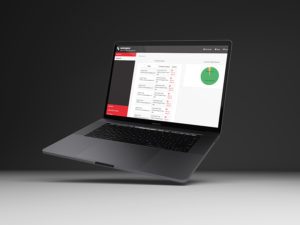 You may have noticed that we tend to bang on about the ROI of our solutions. But it’s not without good reason – when your alternative is a rude wake up call followed by a 3am drive to the data center, all while the downtime bill racks up and your customers scream, deploying Opengear remote management makes for a very attractive proposition.
You may have noticed that we tend to bang on about the ROI of our solutions. But it’s not without good reason – when your alternative is a rude wake up call followed by a 3am drive to the data center, all while the downtime bill racks up and your customers scream, deploying Opengear remote management makes for a very attractive proposition.
Perhaps not surprisingly, we tend not to focus on the other side of the equation. The cost of not having network resilience is clear, but what’s the cost to have it?
Running the numbers
The initial capital outlay is easy to calculate, once you’ve worked out how many sites and devices you’re managing. With our intuitive product interfaces (no certifications needed!) and industry leading, free technical support, it’s fair to say the cost of adopting Opengear is minimal.
Ongoing operational costs take a bit more figuring out. For starters there’s your cellular data plan, which can be a little as $5/month/site – a bargain vs. traditional phone lines.
But we’re skirting around the real issue here – when you deploy out-of-band, you’re deploying a secondary infrastructure, and in many cases an entire secondary network. This means more network endpoints to maintain and more network complexity to manage.
The hidden costs of resilience
When you’re up to your eyeballs managing a production network, the last thing you want on your plate is more work managing your out-of-band network. (Actually the last thing you want is a remote outage where you haven’t deployed Opengear yet! Sorry couldn’t resist.)
Manually configuring and installing console servers one-by-one is time consuming and not particularly fun. Plus it’s the kind of task that tends to get delegated to a relatively inexperienced junior network admin or contracted remote hands, making it all the more prone to human error.
And when network operators need access to a remote router that’s gone dark, are they fully trained to determine the network state, connect either to the Opengear unit’s primary or backup cellular IP address (assuming there’s no carrier NAT), then start a session to the correct serial port? You’d hope so. But in reality, ops don’t necessarily know or even care what a console server is, they just need that router console.
Self-managing remote management
We built Lighthouse 5 Central Management to address these very challenges.
Using Lighthouse Console Gateway, you don’t need to know how the router or switch console is cabled up. You don’t even need to know how the Opengear unit managing it is connected to Lighthouse – be it in-band, behind a firewall, or tunneling over an insecure public network like the cellular WWAN. Just type the name of the target device using your preferred SSH client or web browser, and hey presto – you’re connected. Lighthouse manages the underlying complexity so you don’t have to.
Zero Touch Enrollment extends Opengear’s class-leading Zero Touch Provisioning capabilities, enabling Opengear units to be automatically and completely configured, and securely connected to Lighthouse within minutes. This redesigned enrollment process even integrates with your AAA servers to automate user permissions management, matching metadata tags to automatically grant access to authorized users.
Finally, with Lighthouse 5’s open, RESTful API you can integrate out-of-band access directly into your monitoring, trouble ticketing and collaboration tools – “there’s a problem with this switch, click here to fix it” – so ops are more efficient than ever.
So while the cost of network resilience can be non-trivial, in Lighthouse 5 we’ve designed a solution that allows you to equip your network for maximum resilience with maximum ROI. And after all, what price do you put on a good night’s sleep?


